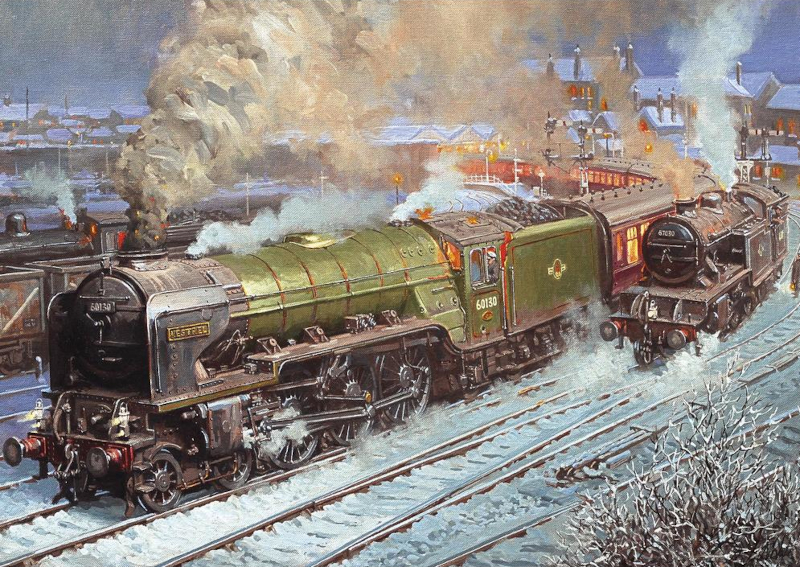Kestrel at Hartlepool 500 pcs David Noble
Puzzle Number: G3130


Puzzle Description
British steam enthusiasts will know all about the decades of British steam engines and their glorious heyday and inevitable demise first to diesel and then to electricity. There's nothing quite like the distinctive chugging of British steam engines and streaming clouds as they would whistle across the network. David Noble is an accomplished train painter and sells his work far and wide to public that has not lost its enthusiasm for the romantic era of the British steam engine.
Naming came after nearly two years, on 20th July 1950 following a general overhaul at Doncaster. Kestrel was one of half a dozen A1s with bird names, four from A4s, the name Kestrel being carried by an A4 from February 1937 until November 1947; most of us knew that engine later as Miles Beevor. While in works as well as naming it was repainted in BR blue, one of four done that month. Though No. 60130 was the first Darlington A1 it was the ninth or tenth to be named. 15th September 1951 brought a transfer to Grantham along with eight others. This was due to a reduction in through engine diagrams in favour of shorter ones with each engine being shared between two crews. Repainting into BR green was in January 1952, following a ‘Heavy Intermediate’ at Doncaster, again the tenth Darlington-built one so treated but about the 20th of the whole class.
Hartlepool was founded in the 7th century, around the monastery of Hartlepool Abbey. The village grew in the Middle Ages and its harbour served as the official port of the County Palatine of Durham. After a railway link from the north was established from the South Durham coal fields, an additional link from the south, in 1835, together with a new port, resulted in further expansion, with the new town of West Hartlepool. England's Industrialisation and the start of a shipbuilding industry in the later part of the 19th century caused Hartlepool to be a target for the Imperial German Navy at the beginning of the First World War. A bombardment of 1,150 shells on 16 December 1914 resulted in the death of 117 people. A severe decline in heavy industries and shipbuilding following the Second World War caused periods of high unemployment until the 1990s when major investment projects and the redevelopment of the docks area into a marina saw a rise in the town's prospects.